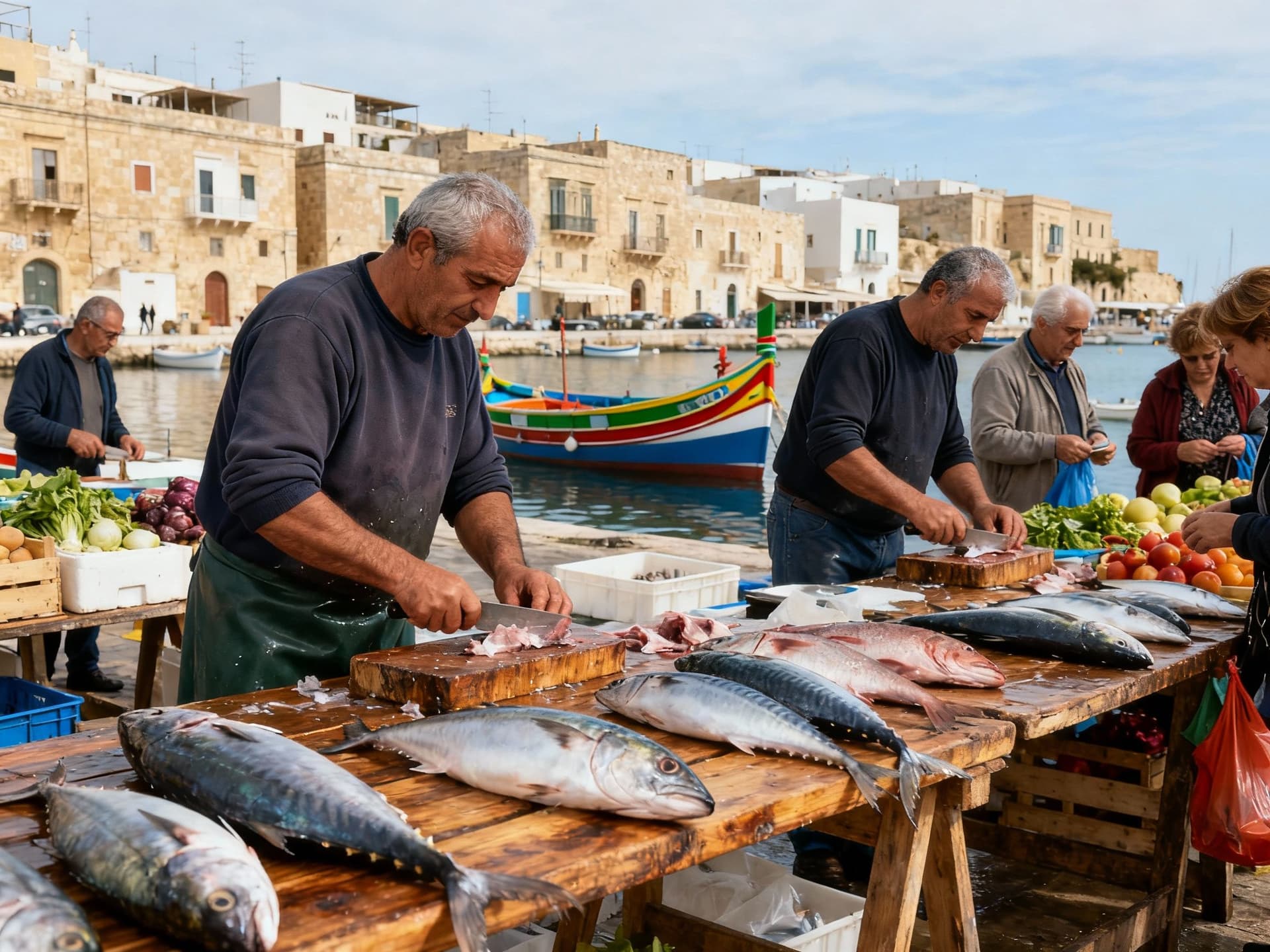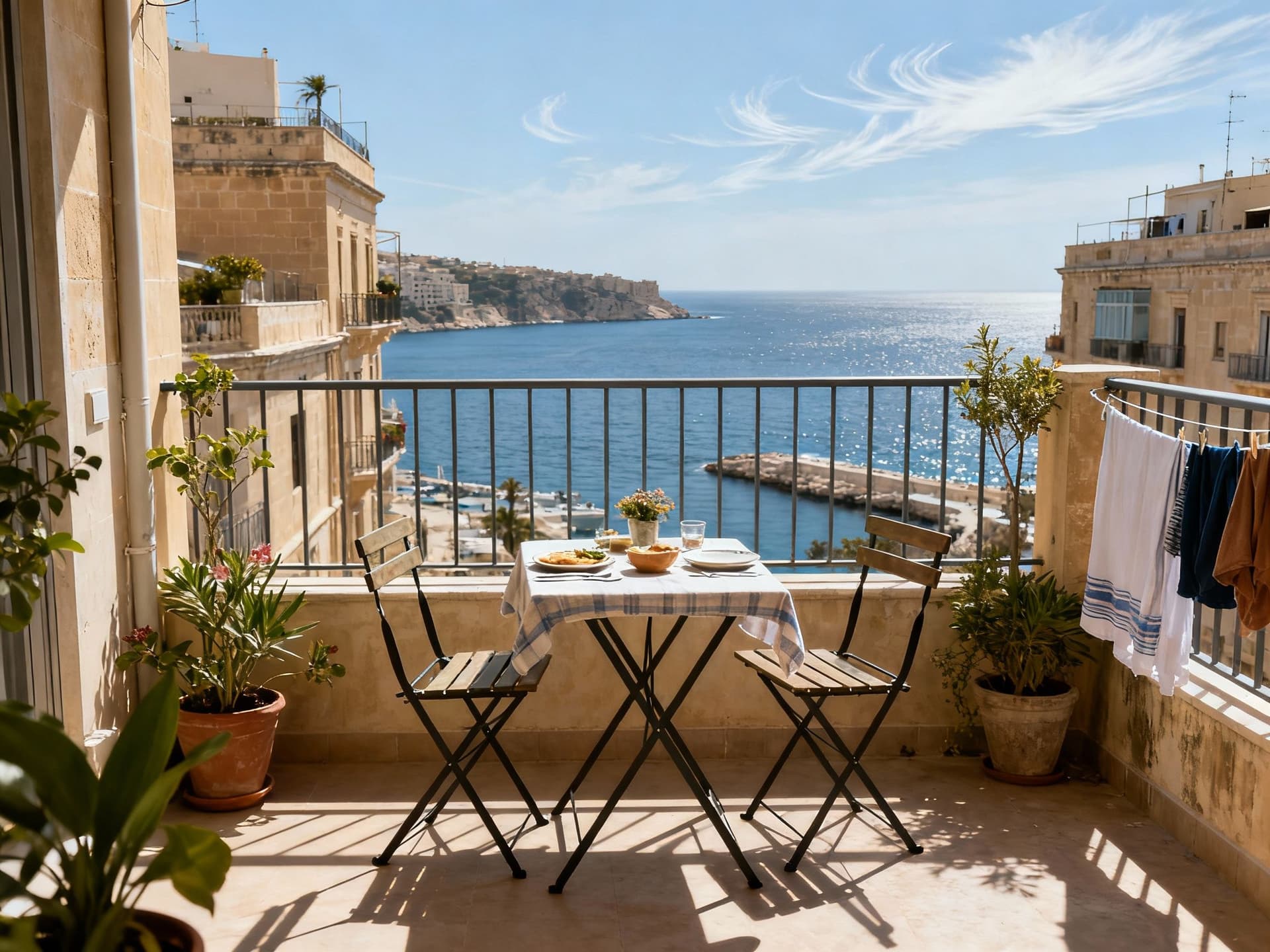Malta’s Micro‑Market: Love the Life, Underwrite the Numbers
Malta’s charm hides a micro‑market: strong tourism and limited land lift prices but compress net yields—buy for income with conservative occupancy and local expertise.
Imagine stepping out onto Valletta’s narrow limestone streets at 8am: café cups clinking, delivery vans threading past baroque facades, and a Mediterranean light that makes honey-coloured stone glow. That compact, lived-in intensity—history at arm’s length, sea a ten-minute walk away—is what sells a life in Malta, not just a seaside postcard. But for international buyers this romance meets real constraints: high demand, constrained land, and rules that shift with EU scrutiny. This piece pairs the sensory—cafés, festas, swims off Għajn Tuffieħa—with hard signals you need before making an offer.
Living the Malta life: a small-island rhythm

Malta is dense and immediate. Days are measured in market runs, sea dips, and an afternoon espresso in Sliema or a late-night ġbejna and lampuka plate in Marsaxlokk. Summers pulse with tourism—restaurants and rooftop terraces fill—while winters are mild, quieter and more local. That seasonality matters for renters and owners: peak months can skew short‑let income, but year-round demand from professionals, students, and long‑stay travellers supports a more stable baseline.
Neighborhood spotlight: Valletta, Sliema & St Julian’s
Valletta is compact and heritage‑heavy—excellent for premium short‑lets and buyers who prize character; floor‑plans are often irregular and require sympathetic renovation. Sliema is commercial and walkable, with a straight line to ferry links and strong long‑stay rental demand from professionals. St Julian’s (Paceville) is nightlife-driven and yields high short‑let rates but carries seasonal volatility and management overhead.
Food, festa and seaside: what you smell and hear
Weekends mean fish markets in Marsaxlokk, pastizzi from bakery windows in the early morning, and neighborhood festas that close streets and redefine local life for a day. The sea is never more than half an hour away from most points on the main island; boating and cliff‑side swims are social currency. These rhythms influence what tenants want—outdoor space, easy parking, and proximity to social hubs.
- Lifestyle highlights: cafés on Tower Road (Sliema), the Upper Barrakka Gardens (Valletta), the Saturday market at Marsaxlokk, cliffs and swims at Golden Bay, hidden gema: the bookshop-cafe Caffe Cordina for slow mornings.
Making the move: practical considerations that shape returns

Lifestyle expectations must be reconciled with market data. Malta’s property price indices show continued upward pressure: the NSO recorded the Property Price Index at 159.98 in Q1 2024 and the RPPI registered multi‑percent annual increases through 2024, driven by land scarcity, strong tourism flows and steady demand from foreign buyers. Those dynamics lift capital values but compress gross yields—so measure returns on net yields after management, maintenance and seasonality.
Property types and how they fit daily life
Historic maisonettes and converted townhouses in Valletta give instant character but often need thermal upgrades, structural fixes and ongoing specialist maintenance. Modern apartments in Sliema or the Northern Harbour area offer cleaner floorplans and predictable rental appeal, while villas in the south provide outdoor space but longer vacancy risk. Choose by tenant profile: young professionals want transport and cafés; families want schools and parks; holiday tenants want sea access and balconies.
Working with local experts who speak lifestyle and numbers
Steps to align lifestyle with yield: 1) Map desired lifestyle (neighborhood, outdoor access) vs realistic rent comps; 2) Get a local valuation that separates 'tourist premium' from sustainable rental rates; 3) Factor in seasonality—forecast occupancy rather than peak month rates; 4) Budget 8–12% p.a. for management, maintenance and taxes; 5) Verify planning and conservation constraints on heritage buildings.
Insider knowledge: myths, red flags and expat truths
A big myth: Malta guarantees a quick path to EU residency for property buyers. Recent legal developments—including the European Court of Justice ruling against Malta’s citizenship‑for‑investment schemes—have ended several investor routes and increased regulatory scrutiny. That changes the motive for purchases; investors can no longer assume citizenship benefits will remain an easy fringe advantage, so returns must stand on rental income and capital growth alone.
Cultural and practical red flags
- Things expats routinely underestimate: 1) Heritage constraints—restoration permits for historic façades can take months; 2) Land scarcity effect—prices for sea‑view or central units include a large land premium; 3) Management overhead—short‑lets need active local management and compliance with tourist licensing; 4) Parking and access—street parking is limited and affects tenant choice; 5) Construction quality—older buildings may need extensive rewiring and damp treatment.
Longer-term lifestyle and value considerations
Tourism volumes topped 3.56 million visitors in 2024, pushing hospitality demand and supporting short‑let incomes but raising questions on sustainability and seasonal pressure. For long‑term value, track infrastructure plans, local conservation policy, and how the market responds to EU regulatory changes. Diversify exposure across property types or regions (city apartments + Gozo/ southern villas) to smooth volatility.
- Practical next steps: 1) Commission a local market report with transaction comps for your target streets; 2) Run a 5‑year cash‑flow model with conservative occupancy (60–70% for short‑lets); 3) Ask for recent utility and maintenance records on older buildings; 4) Insist on clear clauses for remediation costs in contracts; 5) Engage a Malta‑based tax advisor to model net yield.
Malta’s compact size delivers intense lifestyle benefits: sea access, festivals, and a bilingual culture that eases integration. But that same compactness concentrates risk—price sensitivity to tourism trends, land-driven valuation jumps, and regulatory changes that materially affect buyer incentives. Treat Malta as a high-demand micro‑market: fall in love with the life, then underwrite the numbers that let the investment stand on its own.
If you’re ready to explore options, an experienced local agency will connect lifestyle scouting (streets, cafés, morning runs) with the exact comps, conservation rules and cash‑flow scenarios you need. Plan to visit outside peak season to measure everyday life, get multiple valuations, and test management providers before signing.
Swedish financier who guided 150+ families to Spanish title deeds since relocating from Stockholm in 2012, focusing on legal and tax implications.


